First Impressions: Stage Manager on the iPad and Mac
For years, iPadOS users have groused about the iPad’s limited multitasking. Apple responded years ago with Split View and Slide Over window configurations and, more recently, fine-tuned how to initiate and manipulate such app states (see “iPadOS 15 Finally Makes Multitasking Discoverable,” 9 October 2021).
External display support has been another bugaboo. The iPad, when connected to a monitor, only mirrors the contents of its built-in screen to the other display. That, users took pains to note, was not all that useful beyond presentations.
Enter Stage Manager, which Apple recently unveiled as a marquee iPadOS 16 feature. It adds a familiar, albeit somewhat limited, windowing system to the iPad. To the delight of some iPad users, multiple apps can now be resized, rearranged, and made to overlap on the screen—similar to what has occurred for decades on the Mac.
Multiple apps can be kept bunched together for specific tasks and projects. Perhaps most notably—and a tad confusingly—recent apps and app groups are shown on the left side of the screen in the form of angled thumbnails that act as a new kind of App Switcher or secondary Dock.
Stage Manager can work on an external display as well as on the iPad’s screen, and there is no mirroring (except for the Dock, which is replicated on each screen). Instead, different sets of apps and app groups live on each display, and you can move them from one to the other.
Apple didn’t restrict Stage Manager to the iPad. It’s also a feature of the recently unveiled macOS 13 Ventura. But while Stage Manager may feel superfluous on the Mac, which already has a full window management system, it’s more compelling on the iPad, given iPadOS’s paucity of windowing capabilities until now. For this reason, I’ll focus on the iPad but wrap up with a quick look at the Mac version of Stage Manager.
Don’t construe this article as a formal review of Stage Manager—I’m working from pre-release versions of iPadOS 16 and macOS 13 Ventura. If you’re feeling adventurous and have a non-essential device to dedicate to testing, Apple released public betas earlier this month (see “Apple Opens Public Betas for macOS 13 Ventura, iOS 16, iPadOS 16, watchOS 9, tvOS 16, and HomePod Software 16,” 11 July 2022). The betas are unsurprisingly flaky, which played havoc with my Stage Manager use at times, and may be missing capabilities yet to come.
Stage Manager Hardware Requirements
Before we dive in, a few notes on hardware. Most importantly, Stage Manager requires an iPad with an M1 processor. That includes any current-model iPad Pro and the fifth-generation iPad Air, which is what I am using (see “Apple Unveils Fifth-Generation iPad Air with M1, 5G, and Center Stage,” 8 March 2022). Josh Centers recently wrote about the controversial M1 requirement in “Explaining Stage Manager’s M1 iPad Requirement” (16 June 2022).
If you are using an external display, Stage Manager requires you to connect a keyboard and a mouse or trackpad since there’s no other way to manipulate objects on the external display. Apple got us a part of the way there when it added pointing-device support to iPadOS (see “The iPad Gets Full Trackpad and Mouse Support,” 28 March 2020), and now it’s making another leap with full multi-screen support.
Key Stage Manager Settings
To activate Stage Manager, tap the Stage Manager button in Control Center. It shows a symbolic representation of an app window with dots (denoting other apps) beside it.

Pressing and holding that button brings up a couple of options. You can decide to show or hide the Dock when Stage Manager is on, but this feature feels a bit fussy, and I don’t think Apple has thought it through. Regardless, if the Dock isn’t visible, you can get it back with a short drag up from the bottom edge. Similarly, you can show or hide the Recent Apps switcher on the left side.
A couple of other relevant options live in Settings > Display & Brightness. First, go into Display Zoom. Along with the standard screen magnification options, there is a new More Space option. It makes onscreen objects smaller, giving you additional real estate—precisely what you want when working with multiple overlapping windows and the Recent Apps switcher, which takes up a lot of space on the screen.
Second, if you’re connected to an external screen, you should see symbolic representations of both displays, and you can tap each to tweak settings.
Near that graphical display list is an Arrangement option reminiscent of the Displays preference pane on a Mac. On my iPad, I positioned the external display on top of the iPad’s screen, mimicking the physical setup of my iPad Air sitting directly below my monitor, with my iPadOS cursor zipping up and down between the two screens.
Using Stage Manager on the iPad Screen
Stage Manager takes some getting used to on the iPad screen, so it’s best to play around until you start internalizing its subtleties. The key new variable is that app windows are no longer full-screen by default, but instead free-floating and a bit more Mac-like.
Nothing will happen at first when you activate Stage Manager in Control Center. The Home screen looks the same. But when you open an app from the Dock, the Home screen icons vanish, and your wallpaper visible around the app’s edges blurs. Minimizing the window (by choosing Minimize from the ••• menu at the top center of the window or flicking downward from the window’s top edge) brings the Home screen back.
I began my Stage Manager exploration by tapping to open an app, short-swiping upward to get the Dock back, tapping to open another app, going back to the Dock, and so on. You can do this five times to fill the four Recent Apps slots, with a fifth app active. If you continue opening and minimizing apps, the next new app will replace the oldest item in Recent Apps. Even after an app disappears from Recent Apps, it persists in the traditional App Switcher accessed by long-swiping up from the bottom edge of the display.
Let’s resize some windows! On the iPad screen, you accomplish this by dragging the little grabber on a bottom corner (the black squiggle that sometimes appears on the left, sometimes on the right) to change the window’s size and shape. Vertical resizing is limited, but you can alter a window’s width quite a bit. Make it super narrow, or the equivalent of full-screen if you want to hide the Recent Apps switcher temporarily.
If you want more than one app visible at a time, create app groups. This is supposed to work in one of two ways: by choosing the Add Another Window from the ••• menu found at the top center of every window or by dragging one window alongside or atop another. The first option works when adding a second window to a single one on the Home screen but currently generates a “Not Available Yet” error message when you try to add more windows. It is a beta.
No bother, though, because you can drag apps alongside or atop others from the Dock or from Recent Apps. Each app group can contain up to four apps.
When minimized into Recent Apps, such a group sports an icon for each of the apps found therein.
Next, we can tinker with app-group arrangements. You can move windows around within a group by dragging their upper edges. Windows can sit side by side, similar to the standard Split View, or overlap in little piles—you accomplish this by fiddling with the windows’ resizing grabbers until the apps snap into the desired positions.
Not every app will cooperate with Stage Manager, with some resisting resize attempts or displaying other quirks. Be patient, it’s early days.
Using Stage Manager on an External Display
Stage Manager becomes a bit more full-featured and Mac-like on an external display. I used a couple of monitors—a Studio Display on loan from Apple (see “New Mac Studio and Studio Display Change Mac Buying Calculus,” 8 March 2022), connected via Thunderbolt, and my trusty 23.7-inch LG UltraFine Display (see “Apple Debuts LG’s All-New 23.7-inch UltraFine Display,” 20 May 2019), linked to the iPad with a USB-C cable. In both cases, I plugged the iPad into a powered Thunderbolt port (the Studio Display has one and the UltraFine Display has two).
While Stage Manager on an external display looks like the version on the iPad screen, there are a few differences.
Resizing is more sophisticated and Mac-like. There is no window grabber. Instead, you use your mouse or trackpad to hover your iPad pointer over an edge or corner of a window until the pointer changes to an arrow-style resizing guide, similar to what happens on the Mac.
You can then go on a window-resizing spree courtesy of all that additional space the external display provides. The four-app limit still applies, but there is much more room to maneuver. At one point, I had four windows neatly tiled on the Studio Display. Getting there was aggravating, though, partly due to beta bugs but mostly because iPadOS put up a fight; windows often don’t line up the flexible, effortless way that occurs on a Mac. Apple should address this for its iPadOS external-display support to achieve its full potential.
The fact that you are operating with two displays doubles your options and expands your possibilities. Do the math: you have four Recent Apps slots on each screen. Each slot can accommodate groups of up to four apps each, plus the active set on each screen. That works out to 40 windows vying for your attention, which could be helpful or harrowing.
You can move apps between screens. The ••• menu at the top center of each app window has a Move to Display option, which moves the app from its current display to the other one. You can also drag files between apps and screens using a mouse or trackpad—a picture from Photos on your iPad’s display to a Mail message on your external monitor, for instance.
Is Stage Manager Worth It on the iPad?
I have found Stage Manager for the iPad to be an amusing plaything, but I’m still unsure to what extent I will permanently embrace it. I tend to be minimalist in my iPad use, so I wonder whether Stage Manager is more multitasking power than I need. I never use Slide Over windows, and I’m a light Split View user at most, so I can’t imagine when I would want four sets of four-window app groups visibly available on my cramped iPad screen.
That said, I can think of scenarios where Stage Manager would be a huge improvement on certain much-used Split View maneuvers. I often keep an eye on my wife in Find My (with her permission, so I am poised for her arrival to unload groceries or gardening supplies), and I put that window next to whatever Google Doc or WordPress site I’m editing. When I’m not using Find My, my work email in Mail often takes its place. I prefer having these combos visible on the left side of my display instead of switching to them using the Dock, Home screen, or App Switcher.
Stage Manager on an external display gave me a jolt of excitement because it’s the sort of scenario I’ve daydreamed about. Other tech companies have been executing similar maneuvers for years. Perhaps the best-known example is Samsung’s Dex, with the company’s Android phones and tablets hooked up to external displays for Windows-style functionality distinct from what is on the device’s screen.
Better external display support was preordained once Apple added pointing-device support to iPadOS. Now, with users being able to run independent apps on an external screen, the potential for additional productivity is more clear. All that extra real estate makes it far more convenient for me to work on those WordPress sites or Google Docs, not to mention photo and video editing. I could see myself getting some serious work done here.
But let’s get real. Stage Manager on an iPad still isn’t the equivalent of using a Mac connected to an external display. While the iPad’s pointing-device support is just a few years old, and windowing support is barely out of the womb, Mac multitasking has seen decades of refinement. Stage Manager for iPad on an external display will do in a pinch, but I’ll always favor the Mac.
Using Stage Manager on the Mac
That’s why I’m kind of excited about the Mac version of Stage Manager. Even though the Mac already does windowing well, I’m feeling more bullish on the macOS version of Stage Manager than the iPad version because it fits in naturally with other windowing approaches on the Mac. I’ve been using it a lot.
It works much as it does on an iPad, with minor variations. You turn on Stage Manager via a button in Control Center, and you can make that a standalone button in the menu bar for even quicker access. Activating Stage Manager makes apps other than the active one whoosh into Recent Apps Switcher (see the animation below).
Files and folders on your Desktop might vanish from view, but clicking anywhere on the Desktop makes them visible again. Apple, perhaps anticipating complaints about this, recently added a setting in System Settings to show Desktop items at all times (my preferred scenario). Go to Desktop & Dock > Stage Manager > Customize to access a switch to keep Desktop items visible. There’s also a toggle to hide or show the Recent Apps switcher (what Apple calls the “Strip”). You can deactivate Stage Manager entirely via Desktop & Dock, too.
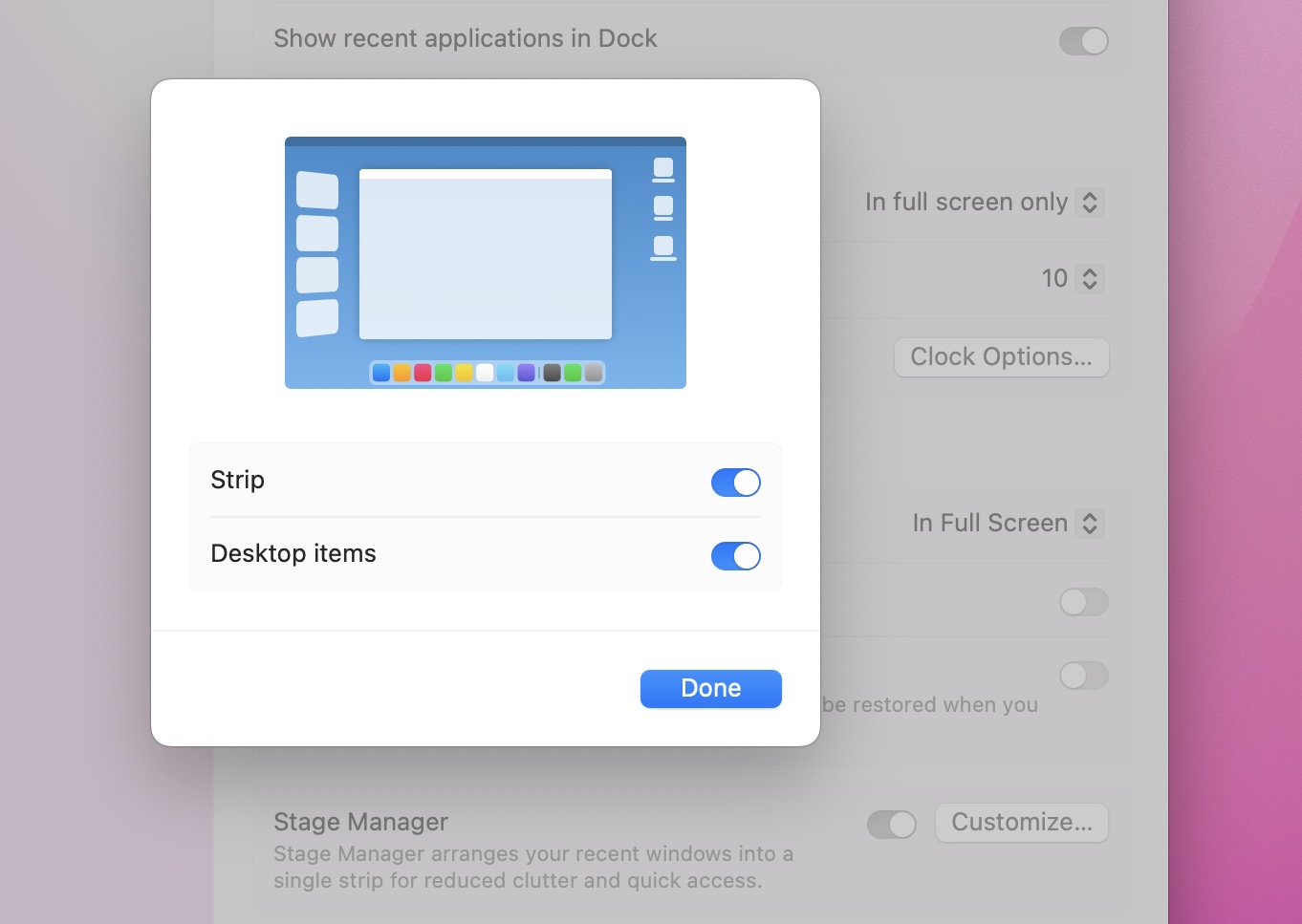
The Recent Apps switcher in macOS has up to six spots, compared to four on iPadOS, but Stage Manager will drop that to four or five spots on smaller or lower-resolution Mac screens. To create app groups, drag apps from Recent Apps alongside or atop others that are currently active. There doesn’t seem to be a limit on how many apps you can group.
When minimized, an app group shows icons for each app, but this ceases to be helpful once the group contains more than three or four apps.
If one of your apps has multiple open windows, you’ll see them all stacked together in Recent Apps, making it easy to flip through them with rapid-fire mouse clicks.
What if you’re accustomed to having your Dock on the left side of the screen? No problem: the Dock will appear on the far left edge, with Recent Apps just to the right.
You can hide the Recent Apps switcher in a couple of ways. There is a checkbox for that in Control Center, just below the toggle for switching Stage Manager off and on. If you enable that option, the Recent Apps switcher is still available (in a different 2D flattened style) by pushing your cursor to the left edge of the screen.
Likewise, it will disappear if you resize a window to occupy the full screen but reappear if you nudge the cursor to the left edge. Confusingly, you can’t get at Recent Apps if a window is in full-screen mode, thanks to clicking its green zoom button.
So far, Stage Manager is a win for me because it enforces tidiness. When I’m using one app or app group, others shrink into Recent Apps. My window-cluttered Desktop is largely a thing of the past.
Stage Manager does not compel users to abandon other native Mac windowing tools. You can still switch apps with Command-Tab. Mission Control works as usual. Spaces is still useful—perhaps even more so—because you can have different sets of apps and app groups arrayed in Stage Manager within each space. (But I seldom use Spaces, honestly.)
Likewise, Stage Manager doesn’t force me to give up beloved third-party windowing tools, some of which I have written about here (see “Automate Window Positioning With macOS and Apps,” 10 March 2020). With a few minor adjustments, you can use them to resize and reposition windows within Stage Manager.
Setting the Stage
With Stage Manager, Apple is pushing boundaries. A few interesting things appear to be going on here.
First, Apple is bringing iPadOS more up to speed with its hardware, which is so powerful that iPad users bemoan its wasted potential. It’s difficult to glean precisely where Apple is headed, but Stage Manager’s refined external display support suggests a time not too distant when iPad productivity will more closely approximate Mac productivity, courtesy of an increasingly sophisticated iPadOS. iPad apps will have to catch up too.
Second, Apple is making macOS more familiar for those who have come to the iPad first. Speculation has bubbled for years about Apple aiming to merge the iPad and Mac platforms. That’s not going to happen, but the simultaneous debut of Stage Manager on iPad and Mac shows again that Apple aspires to make the platforms increasingly similar and interoperable.
Finally—and I realize this is wild speculation, not least because of Stage Manager’s M1 requirement—imagine a future where Stage Manager also runs on the iPhone, at least when connected to an external display. Using my iPhone as both a phone and a desktop computer is among my most fevered Apple fantasies. When arriving somewhere with a large desktop display, keyboard, and trackpad at my disposal, I’d plug in my USB-C–equipped iPhone and get the full Stage Manager experience, similar to what occurs with Samsung Dex. In that fantasy, there may come a day when some people consider an iPhone their one and only computer—no Mac or even iPad needed. Or not—Apple prefers it when many of us purchase all three devices. But I can daydream.
Despite all my enthusiasm, perhaps the cleverest thing Apple has done with Stage Manager is to make it easy to turn off. I find myself frequently tiring of it, even on the Mac, and it is nice to banish it with a finger flick or mouse click. Please keep that option available, Apple.
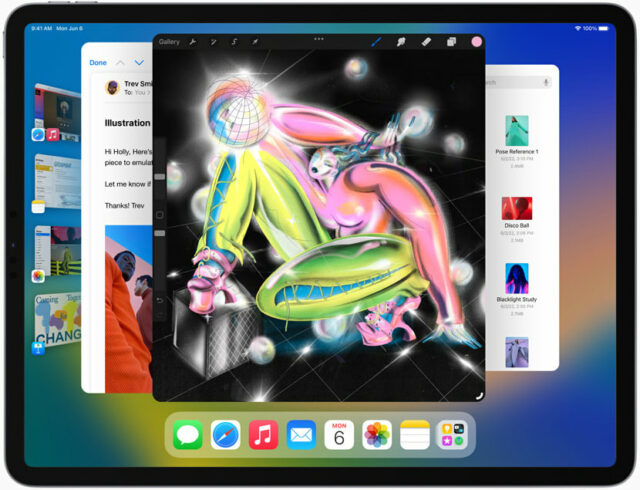
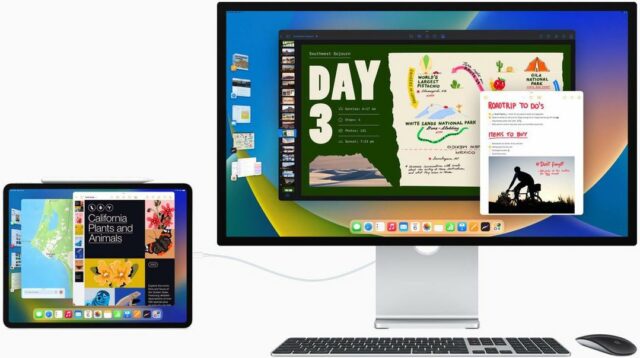
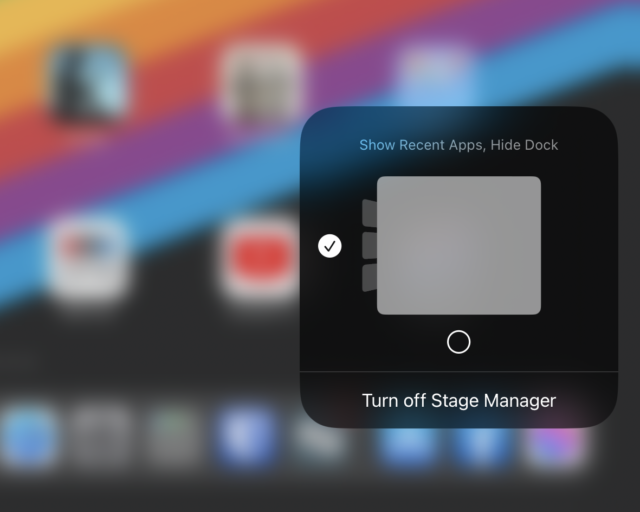
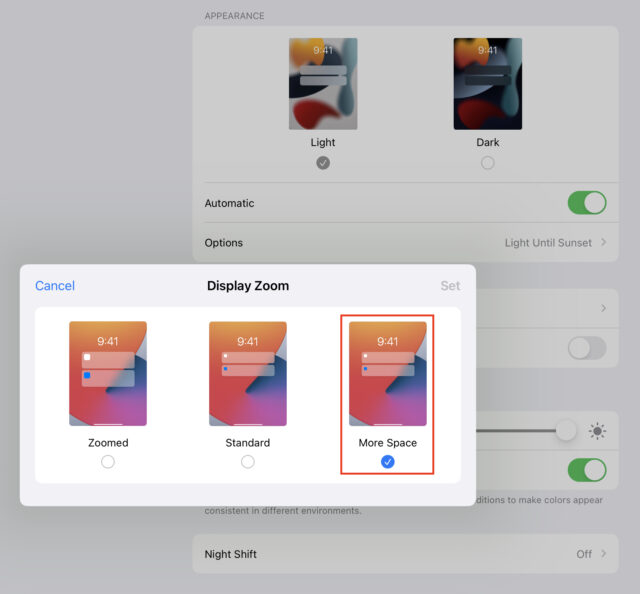

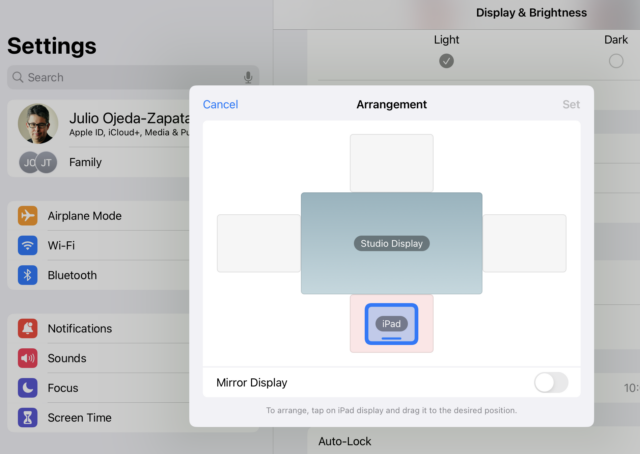
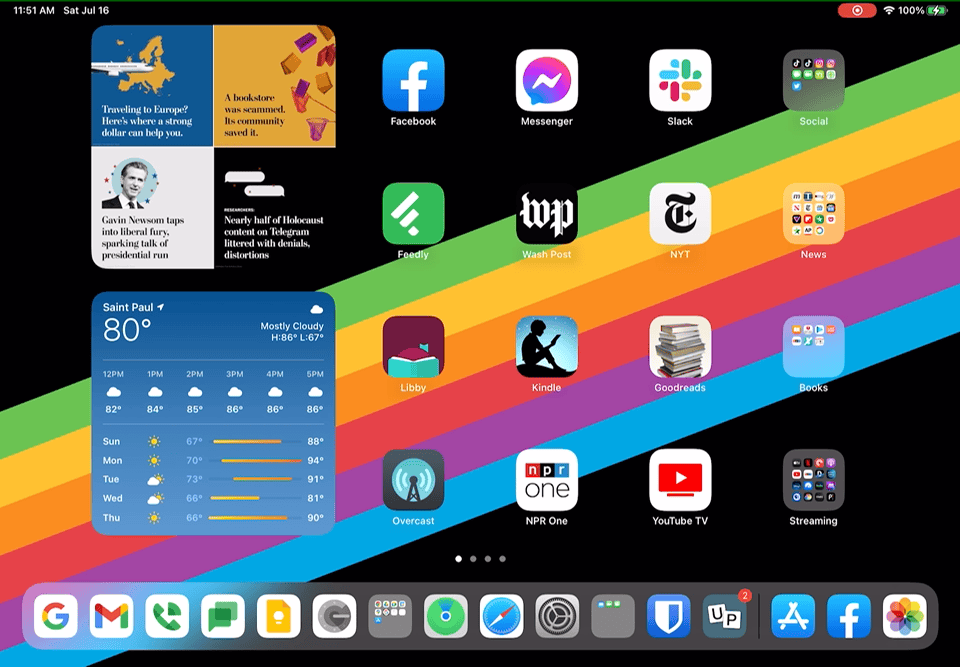
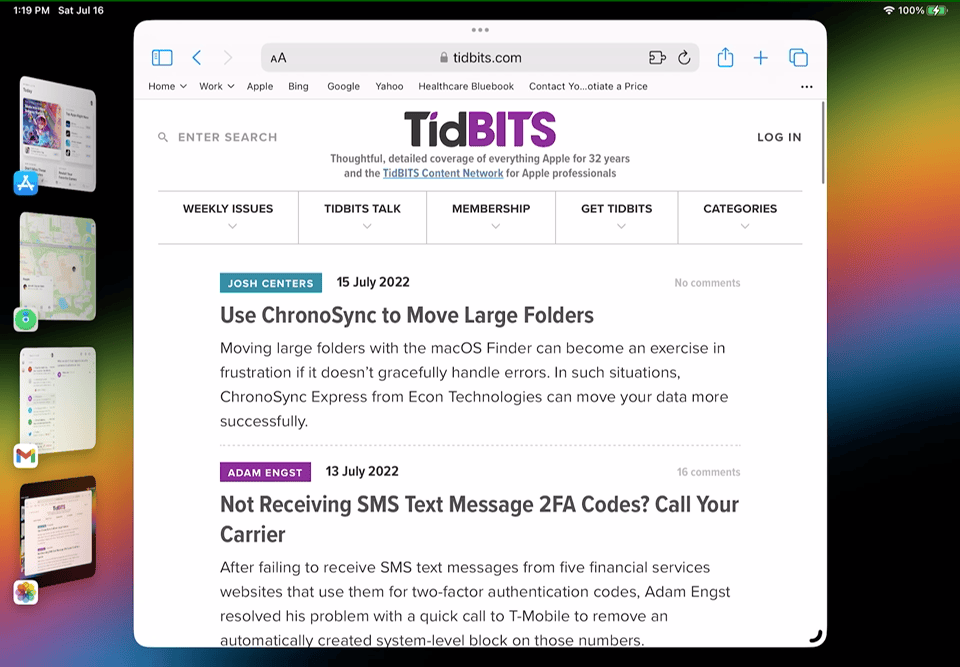
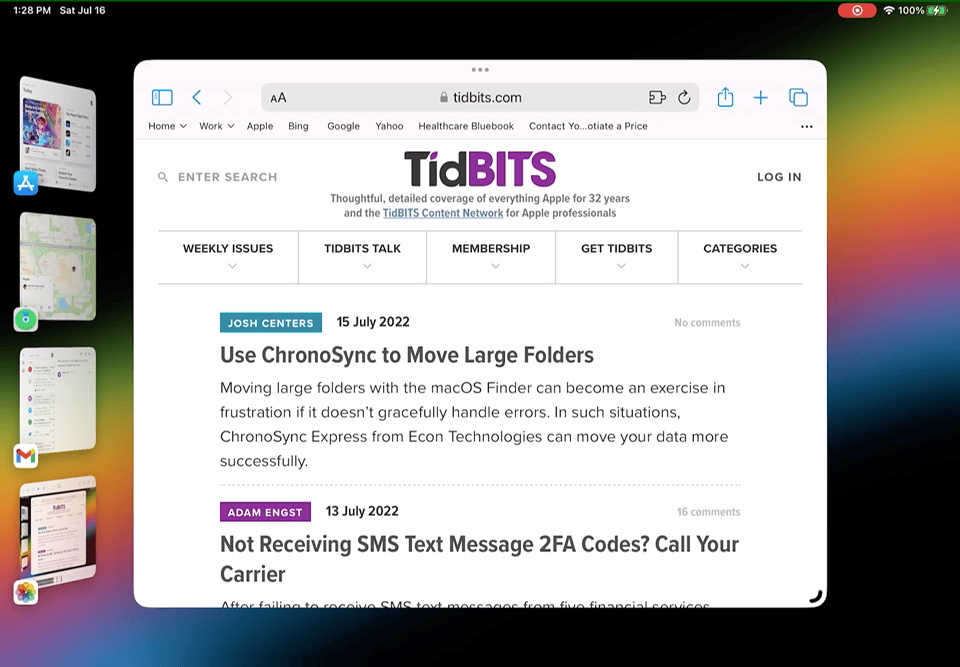
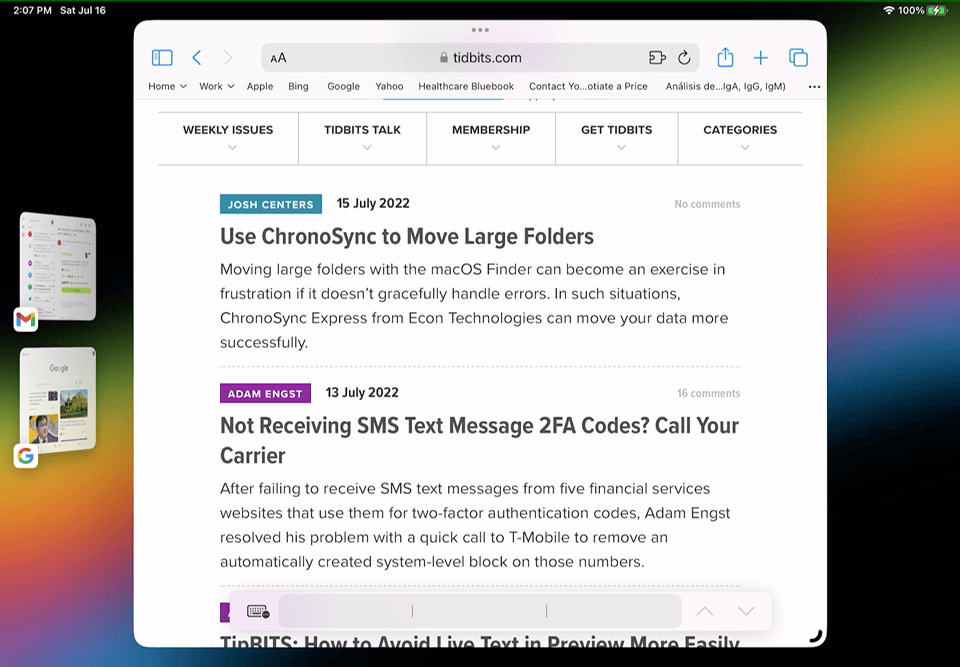

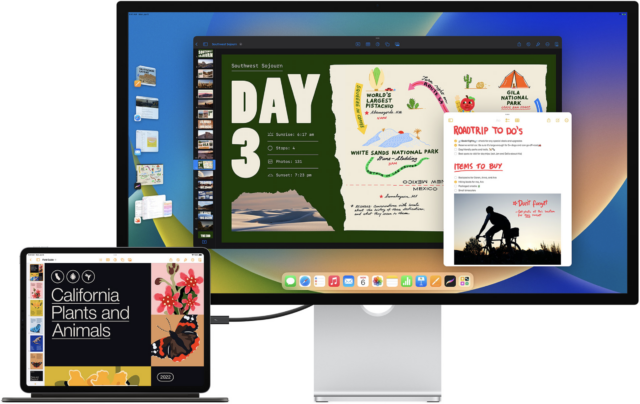
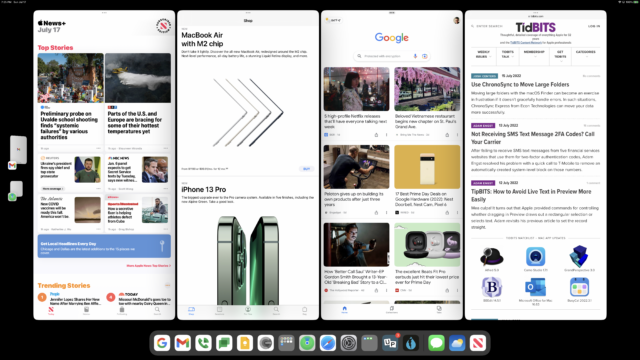
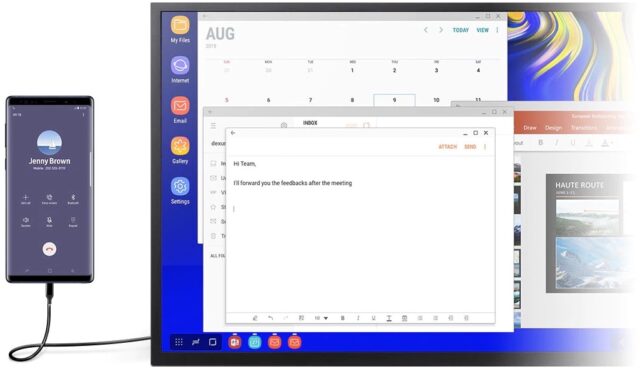
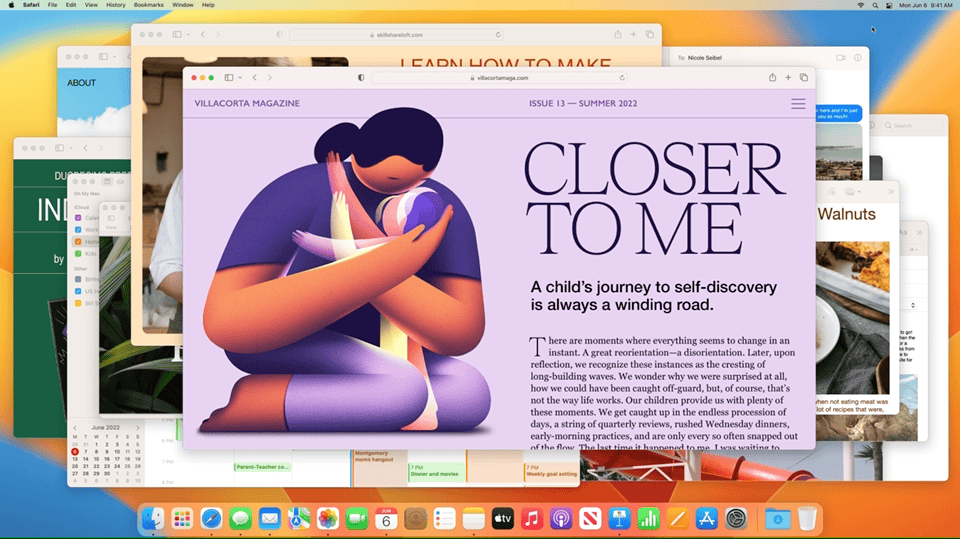
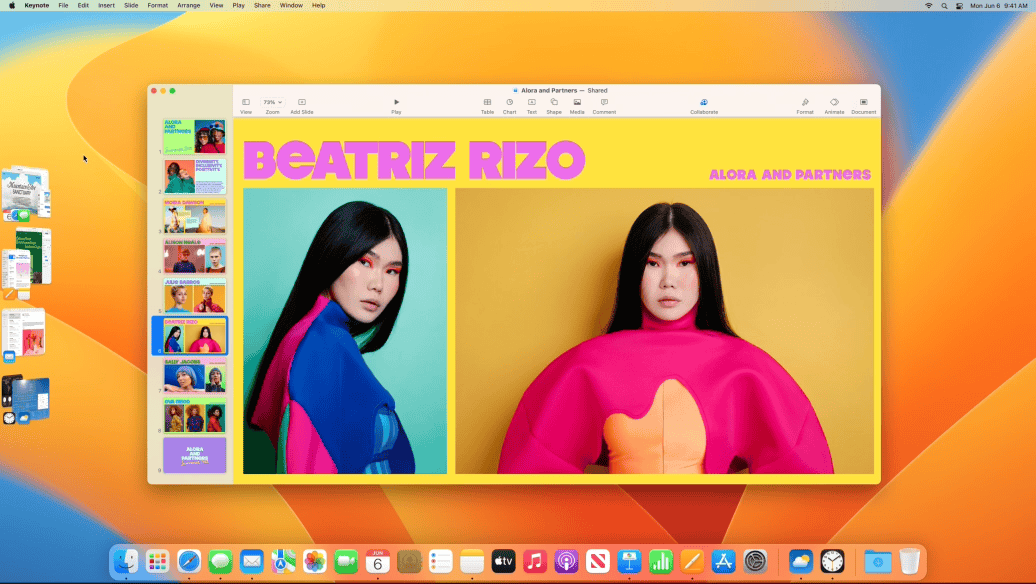
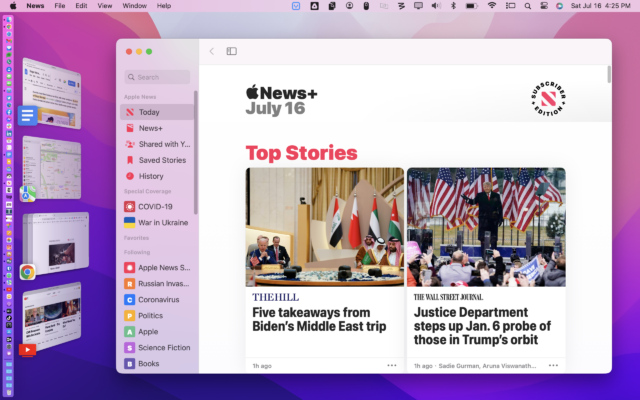
I really like that idea. Especially if Apple returned something like Back to my Mac to iCloud. Imagine if you could just hook up your iPhone (or iPad) to a large screen & KB (that’s what USB-C is for after all) and then do VNC to your Mac far away. All of this without having to fuss about IPs or port forwarding or any of that. All hidden behind iCloud magic, all well secured, and authentication taking place automatically and behind the scenes by virtue of your Apple ID and FaceID on your iDevice.
Nice article, BTW. I don’t imagine I’ll be a heavy Stage Manager user on macOS, but I’ll definitely give it a spin. Although I use virtual desktops on my Linux systems, on the Mac I’ve never really made use of Spaces. Instead, I’m a heavy user of Exposé (Mission Control these days?) when I’m mousing around as well as cmd-tab when I’ve got my hands on the KB. I got the very nice Witch to extend cmd-tab to opt-tab so I can also switch between individual app windows. I’ve set up my Exposé key (F3) to also accept ctrl-F3 for just showing all windows within a certain app.
Window management on macOS—at least to me (and I admit I’m usually quite obsessive about keeping things tidy)—seems pretty solid these days (of course it would be awesome if I could get Finder to remember its default new window settings, but that horse has thoroughly been beaten to a pulp already).
There is the Screens app. I use that to get Back to my Mac on the iPad. Even better, you have the option of using your iPhone as a trackpad. It’s not a built in Apple app, but it’s still nice to use. I don’t know how well it supports Stage Manager.
Indeed, but the app itself is usually not the problem. For most people the tricky bits will be about what IP does my home Mac have right now and have the proper ports been forwarded on my router. In the old days Back to my Mac took care all that behind the scenes, such that really the only thing you needed to do would be to get your VNC client of choice up and running.
I use my iPad as my main device about half of my time. I even work with the iPad on my dining room table even though my office with my Mac with a $1200 standing desk and dual monitors is right next door.
I use the side-by-side and Quick Notes quite a bit. To me, this makes the iPad extremely usable as a main device. There’s little I can’t do on the iPad that I can do on my Mac. The biggest issue is Squarespace which insists I use the iPad app even in places where the app itself is lacking (like creating new blog posts or event with more than just text and images).
Unfortunately, I bought a new iPad Air just before the M1 version was introduced, so Stage Manger won’t work for me. However, I can’t see much use on an iPad by itself. The screen size already limits you to pretty much two apps. Side by side and quick notes are all I need.
Floating/overlapping windows is so 1980s. They’re really a pain and many people prefer their windows to tile like on the Mac where you can have one or two full screen apps at once. I can’t see Stage Manager really helping me out there. It doesn’t offer much besides the a hassle of constantly rejiggering my windows.
However, the multiple screen option is a big old honking game changer. Imagine working on a bigger project and having six windows open at once. That almost makes a Mac obsolete. There’s almost no excuse why you can’t use an iPad to do your work.
A lot of MacOS strikes me as obsolete:
I’ve been using the Mac since 1984 and stuck with it during the dark 1990s when most sensible people abandoned it for the more powerful and modern Windows XP. (Yes, it was an extremely dark time for MacOS when Windows XP was the better OS).
However, a lot of early decisions on what a desktop OS should look like seem to hinder its development and make it difficult to use. iPadOS is a faint vision of a possible OS future. It gets more and more useable each year, but it seems to be in a Zeno’s Paradox: Every year iPadOS gets halfway there.
Stage Manager on a second monitor adds to the iPad usefulness. I’d like to see iPads apps switch to Mac UX when a keyboard and pointing device are added. At that point, iPadOS isn’t a touch based OS. It’s a desktop OS. Whatever people think of menus, they make it easy to find and add functionality. I don’t like using Pages on an iPad because I can’t find things like adding comments, etc. It’s hidden deep within the single dot dot dot menu or in the pop up selection list that, unlike a real popup context menu, shows the options side-by-side and you have to keep pressing the right arrow to find what your looking for. If I have a keyboard and track pad, show the selection box as a drop down context menu.
(And for the iPhone, it’s time to add another row of buttons for numbers. We’re not on a 3½” screen anymore. There’s room.)
Every year, I find myself using my iPad more and more. The M2 MacBook Air is a tempting replacement for my aged Intel MacBook Pro, but I really use my iPad a lot more. As a replacement, I may even buy a new IPad Air or IPad Pro even though mine is less than a year old because of Stage Manager and the ability to use a second monitor. And I’ll get on Squarespace’ s back about it’s forced limit on using its web app on an iPad. This isn’t 2007 any more.
I use my iPad Pro in portrait mode, and currently Stage Manager is refusing to show the recent apps on the left. (I haven’t tried the zoom feature yet.)
Filed a bug.
Screens Connect may handle that for you (setting up forwarding can be tricky) depending on your router. Of course, if you stick to IPv6, no port forwarding is necessary.
Have you found a way to control the size of the Recents images on the left? Mine are showing rather large and taking up a lot of the left side of the screen.
I have been using more than one desktops (spaces, actually 8) on the Mac for may years, so I don’t quite see the benefits of the future Stage Manager on the Mac. It is easy to switch between them using command shortcuts or via the trackpad on a Macbook. I barely use Apple mouses because of tactile problems. So I use different brands of mouses WITH ADDITIONAL BUTTONS wich allow me to switch between the spaces quickly and without having to point to some control button as shown in the video.
Regarding “imagine a future where Stage Manager also runs on the iPhone, when connected to an external display. Using my iPhone as both a phone and as a desktop computer is among my most fevered Apple fantasies. When arriving somewhere with a large desktop display, keyboard, and trackpad at my disposal, I’d plug in my USB-C–equipped iPhone and get the full Stage Manager experience”…
This reminds me of the fantasy I had for a Mac Micro…way back in 2007. If you’re curious, you can check it out in this TMO column: For Your Consideration: The Mac Micro – The Mac Observer
Maybe the time for fantasy to become reality is approaching!
When I saw Stage Manager introduced at the WWDC keynote, I thought, “huh?” However, thanks to @julio 's article, I’m now starting to think this may replace Spaces for me on my Mac. I currently use four Spaces: one for my Bible study software, one for Photos (in both cases, I like to have no other app windows vying for my attention), one for Xcode/Simulator/Feedback/SF Symbols, and one for everything else. I use the common accessibility shortcut ctrl-1, etc., to switch between them, but now I’m thinking I could have them all in the one Space, separated into different app groups. Am I thinking about this correctly? I’m also wondering how window management utilities (I use Display Maid) will deal with SM? Finally, I use my MBP in clamshell mode with two 27" monitors 95% of the time, but what will the experience be like the other 5% when I’m traveling with just the laptop screen?
Have you checked the toggle for hiding and showing the Recent Apps launcher?
After playing with Stage Manager a bunch more, I am becoming convinced I’ll almost never use it on the iPad and almost always use it on the Mac.
On the iPad, Stage Manager doesn’t solve any major problems for me that I can’t deal with in other ways. It just introduces complexity I mostly don’t want on such a small screen. As I noted in the article, I’m minimalist in my iPad use.
On my Mac workstation with a big LG display, though, Stage Manager doesn’t get in my way as much, and is helpful in fine-tuning app-usage annoyances I’ve dealt with for years.
A couple of examples:
I get my RSS feeds on Reeder on the Mac, but use my default external browser (Chrome) when I want to open full articles. I’m really liking how Stage Manager whooshes Reeder away when I want to focus on that Chrome window, and returns it with a click (at which time Chrome removes itself from my sight and mind until the next time I want to open an article).
In Chrome, I have some of my favorite sites set up as shortcuts, which basically makes each of these mini-apps in their own right, with simplified appearances (browser controls are hidden) and their own icons in the Dock. When I want to open one of these, Chrome’s main window annoyingly appears first (which doesn’t happen in Windows and ChromeOS) and clutters up my screen. Stage Manager fixes this problem because it zooms the main Chrome window away moments after it opens so I can focus on my mini-app. When I have a bunch of the shortcuts open, each has a spot in the Recent Apps launcher, each with a distinct icon, and I can go from one to another easily.
Very nice.
Yes, that works in landscape but not portrait. Does Recents show up for you (or anyone else) in portrait orientation? I’ve never seen a screen shot in anything but landscape mode.
A bunch of small windows showed on the left side of the Mac screen after I installed the public beta of Ventura. I found them to be an annoyance, but didn’t know how they got there, how to turn them off or what they were for. So I had no choice but to leave them alone. As I got used to them, I started to realize Stage Manager is without a doubt one of the best and most useful features Apple has added to the OS. Now I’m loving it.
OK, I have finally seen someone in portrait orientation https://www.reddit.com/r/iPadOS/comments/w9p4l4/ipad_os_16_beta_4_stages_of_stage_manager_in/, but recent apps aren’t showing (which in many use cases would presumably be super useful).
I’m very late to this discussion, which I’m reviving because I’ve just recently updated my 2019 16" Intel architecture MacBook Pro to Ventura and discovered Stage Manager.
Were the Mac DeskTop a play, and I the producer, the first thing I would do would be to fire the Stage Manager.
OK, that’s the SECOND thing I’d do, because in just two days of exploration I can see how gorgeously it can organize things for a person with a cluttered mind and cluttered computer screen, but I’ve also discovered more bugs than the number of bedbugs crawling along the edge of a flophouse hotel mattress!
I love this concept, but at the moment I detest its execution. I’ve rebooted my laptop five times in the last half hour just to recover normality.
Here’s a few examples:
So, I’m curious whether anyone here has discovered or suffered from such bugs. If they DO require non-Apple apps to be participating in window management, I suspect exterminating them won’t just take one phone call to Mr. Orkin Apple.
I’d love to hear from others who’ve shared my disappointment as well as from people who’ve had no problems with this new production company employee.
This is what I did, I used to have 8 spaces active just to avoid window cluster.
Quite my case too